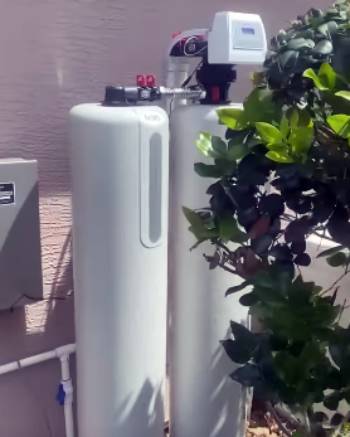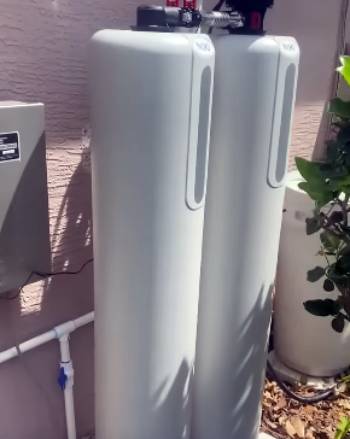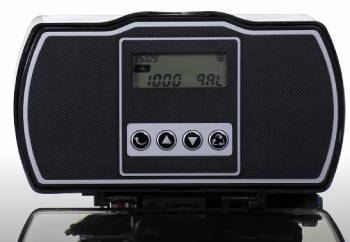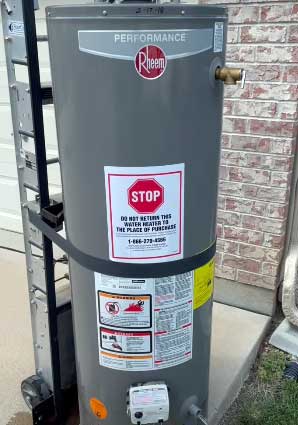If you’ve been frustrated by hard water damaging your plumbing, drying out your skin, or ruining appliances, it might be time to look into the Novo water softener system.
I’ve spent a good amount of time testing and living with the Novo Pro system, and this article will help you decide whether it’s worth your money.
From personal experience to real pros and cons, maintenance tips, and comparisons, you’ll get an honest look at what it’s like to live with one of these systems.
My Real Experience with the Novo Water Softener

When I first bought the Novo water softener, I was skeptical. Salt-free systems always sounded a bit too good to be true.
But after dealing with dry, itchy skin, water spots on every glass, and endless cleaning of my coffee maker and tankless heater, I knew something had to change.
The first thing I noticed was how compact the system was. The installation kit included everything—even a carbon taste filter.
I had it installed professionally because I wanted it done right the first time. The setup was quick, and the plumber appreciated the simple design.
He even mentioned it was one of the easier systems he’s worked with.
About a week in, I didn’t notice a huge change. That honestly had me worried.
But give it time.
Around the third week, I realized I hadn’t had to descale my coffee maker at all. That’s when it hit me—it’s working, just silently.
Over the next month, my skin felt smoother, I used half the shampoo I used to, and my glass shower doors no longer looked foggy or streaky.
It doesn’t remove minerals, but it absolutely prevents them from bonding and leaving build-up behind.
Even better, the filter doesn’t require any electricity or drain water. All I do is replace the cartridge every six months.
The initial price felt high, but when I think about the long-term savings on repairs and how much better everything feels, it’s worth it.
Now, I won’t lie—it’s not perfect. I’ve read reviews from folks who received damaged units or misunderstood how the system works.
And if you’re expecting completely mineral-free water like a traditional salt-based system, you’ll be disappointed.
But if your goal is to protect plumbing, extend appliance life, and improve day-to-day comfort, the Novo delivers.
Maintenance Tips to Keep Your Novo Water Softener Running Smoothly

- Routine filter replacement:
You’ll need to swap out the softening cartridge every six months.
The manual gives you a guide, but it’s basically twist off, replace, twist on.
Takes under 10 minutes, no tools needed.
- Check your water source before installation:
The effectiveness of this system depends on your water quality.
If you’re using well water or dealing with heavy metals, consider using it with a sediment filter or GAC filter.
A water test before installation will help you make better decisions.
- Install bypass valves during setup:
If you ever need to perform maintenance or take the unit offline, having shut-off valves in place is a lifesaver.
My plumber installed them as a precaution, and I’m thankful every time I need to inspect or switch out components.
- Clean housing and O-rings during cartridge swap:
When changing cartridges, rinse the housing with warm water and inspect the O-rings.
Add a light layer of food-safe lubricant if needed.
This prevents leaks and keeps the seal intact.
- Watch for pressure drops:
If you notice reduced water pressure, the filter could be clogged or at the end of its life.
It’s often your system telling you it needs attention—don’t ignore that nudge.
- Protect the system from freezing temperatures:
If you install the Novo in a garage or basement that’s prone to getting cold, consider insulation or wrapping during the winter months.
Freezing can damage internal parts and void your warranty.
Pros and Cons of the Novo Water Softener
Let’s be real—every product has its strengths and shortcomings. Here’s my personal breakdown based on real use and extensive feedback from other homeowners like you and me.
Pros of the Novo Water Softener

- Step 1: Salt-Free Functionality:
The Novo system uses a salt-free formula, specifically the CitraCharge compound, to condition water instead of removing minerals like calcium and magnesium.
That means your water keeps those healthy minerals but doesn’t cause scaling.
This is a big plus for anyone who doesn’t want to regularly lug around 40-pound salt bags or add sodium to their household water.
- Step 2: Easy Installation and Compact Design:
This system doesn’t take up much space, and the included mounting bracket, cartridge, and hardware make it pretty user-friendly. Even if you’re not a pro, you’ll find it easier to handle than bulkier systems.
It fits neatly into tight spots and doesn’t require a drain connection, electricity, or salt storage.
- Step 3: Low Maintenance Needs:
The six-month cartridge replacement is basically the only thing you have to worry about.
That makes it one of the lowest-maintenance systems I’ve ever tried.
The included carbon filter also improves taste, which is great if you’re picky about how your water smells and feels.
- Step 4: Good for Health-Conscious Homes:
Because it doesn’t remove calcium and magnesium, it keeps beneficial minerals intact.
That’s a win for folks worried about their long-term health or people who already have dietary restrictions where added sodium from salt-based softeners might be a problem.
- Step 5: Water Quality Improvements:
While it’s not a traditional softener, it does a solid job minimizing buildup in pipes, on fixtures, and in appliances.
My tankless water heater has been spotless since installing it.
- Step 6: Price and Long-Term Value:
Let’s not sugarcoat it—these systems are pricey.
But when you weigh the potential repair savings, less cleaning, and appliance longevity, it justifies the price tag over time.
Cons of the Novo Water Softener
- Step 1: No True Softening Effect:
Because Novo doesn’t actually remove hardness minerals, it doesn’t give that silky feel some folks associate with softened water.
If you want that feeling, this system might leave you underwhelmed.
- Step 2: Filter Cartridge Costs:
While maintenance is low effort, the replacement cartridges aren’t exactly cheap.
You’re looking at recurring costs every six months, and those can add up faster than you’d expect.
- Step 3: Delayed Results:
Some people expect results instantly.
This isn’t that kind of system.
You may not see a dramatic change until three to four weeks after installation, so patience is necessary.
- Step 4: Unit Durability Issues in Shipment:
I’ve come across several users who received damaged units.
While that seems more like a packaging or shipping issue, it’s still frustrating to deal with as a buyer.
- Step 5: Not Ideal for Very Hard Water:
If your water is extremely hard, the salt-free system might not be enough.
In those cases, traditional salt-based systems might do a better job handling that intensity.
Novo Water Softener Vs. Other Brands
- Novo Water Softener Vs. Aquasure

Aquasure offers a more traditional salt-based water softening approach compared to Novo’s salt-free technology. If you prefer that silky feel and absolute hardness removal, Aquasure might be more your style.
However, that also means dealing with salt refills, regeneration cycles, and increased maintenance. Novo, on the other hand, keeps minerals in your water but prevents buildup using its eco-friendly CitraCharge formula.
It’s more about protection than transformation. So, it really comes down to what your household values more: the feel of truly soft water, or the convenience and simplicity of a healthier, low-maintenance alternative.
- Novo Water Softener Vs. Pelican
Pelican systems are known for their high-end salt-free solutions that also use catalytic media and filtration to combat hard water.
While Pelican offers slightly more advanced filtration with higher flow rates, Novo wins on simplicity, compact size, and easier DIY-friendly installation. Pelican systems often require professional help and are bulkier, while Novo fits comfortably in tight spots.
Plus, Novo includes everything you need right in the box, from the mounting bracket to the taste filter. If you’re after a sleek, all-in-one solution that works right out of the package, Novo has the edge for most mid-sized homes.
- Novo Water Softener Vs. Rheem

Rheem softeners lean heavily into salt-based systems with programmable regeneration and electronic control heads. While they can handle very hard water better than Novo, they require a drain connection, regular salt refilling, and power access.
Novo appeals more to homeowners who want a “set-it-and-forget-it” system without salt or electrical needs. It also scores points for being eco-conscious and producing no wastewater.
Rheem may be better suited for homes with water hardness off the charts, but for average hard water and long-term ease, Novo keeps things simpler and cleaner without sacrificing long-term protection.
- Novo Water Softener Vs. SpringWell
SpringWell salt-free softeners offer advanced TAC (Template Assisted Crystallization) technology, which competes well with Novo’s CitraCharge formula.
The SpringWell models are larger and typically require more space, which can be limiting for smaller homes. Novo holds its own with compactness and ease of use, especially with its all-in-one installation kit.
In terms of maintenance, Novo’s six-month cartridge swap is far easier than maintaining larger, multi-tank setups.
While both are strong choices in the salt-free category, Novo wins for budget-conscious homeowners who want a system that works quietly in the background without hassle.
- Novo Water Softener Vs. Whirlpool
Whirlpool offers some affordable salt-based systems often found in big-box stores. They’re designed for volume and can regenerate automatically, but they do rely on salt and electrical components.
Novo skips the salt, skips the drain, and skips the electricity altogether. Whirlpool might be more powerful in extremely hard water scenarios, but that comes at the cost of higher maintenance and installation complexity.
If your goal is to protect pipes, appliances, and skin while avoiding the hassles of salt, Novo provides a smoother ride with a focus on ease and long-term benefits.
Frequently Asked Questions (FAQs)
It depends on your water type and preferences. Novo is excellent for salt-free, eco-friendly softening, while brands like Aquasure or Rheem are better for salt-based full softening.
Novo systems are manufactured in North America, primarily in Canada, and built to meet high quality and efficiency standards.
Yes, Aquasure is well-reviewed for its salt-based systems that work effectively in homes with extremely hard water. It’s more hands-on than Novo but very capable.
If your system is salt-based, some people avoid it due to added sodium. Novo retains healthy minerals and doesn’t add salt, so drinking it daily is generally fine for most people.
Final Thoughts
If you’re ready to reduce scale, protect your pipes, and make your water feel better without dealing with salt, regeneration cycles, or power outlets, the Novo water softener is a smart buy. I wouldn’t call it perfect, but I’ve lived with it long enough to trust it—and recommend it.
Just know what you’re getting: this isn’t for someone looking for “soft” water in the traditional sense. But if you value simplicity, eco-conscious design, and lasting plumbing health, you’re going to like what Novo brings to the table.
